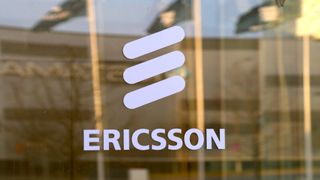Navigating a forever changed communications landscape
The pandemic has changed the way both businesses and consumers prefer to communicate

The past few years have presented a number of challenges for both businesses and consumers when it comes to how they communicate. With face-to-face interactions off the table, video conferencing software and other digital channels quickly became the norm. At the same time, the way in which consumers engage with businesses also changed and organizations turned to live chat software and direct messaging to better serve the needs of their customers.
Now that many employees have begun returning to the office some days and working at home on others as part of their organizations' hybrid work initiatives, the software and communication methods they adopted during the pandemic are still proving useful. In fact, many continue to rely on these new technologies and experiences throughout their workdays.
To learn more about how the pandemic has changed the global communications landscape for the better, TechRadar Pro spoke with Senior Vice President of API Global Sales at Vonage, Sunny Rao.
How has the communications landscape changed over the past year?
The customer communications landscape has changed significantly over the past year. Consumers who embraced new and emerging channels of communication during the pandemic in 2020 continued to use those channels this year at an even higher rate
Our 2020 and 2021 Global Customer Engagement Reports uncovered just how much the pandemic accelerated the global adoption of newer communications channels while increasing fragmentation in channel preferences.
We found that about half (47%) of consumers worldwide have increased their use of digital channels to engage with businesses and service providers over the past 12-18 months and 87 percent expect to maintain or increase this level in the next 6-12 months.
Here in Asia consumers have also increased their use of digital channels to engage with businesses and service providers since the outbreak of COVID-19 – by 52 percent (retail & ecommerce), 51 percent (education), 49 percent (banking & finance), 46 percent (healthcare services), 43 percent (media, gaming & online dating) and 31 percent (transportation & travel). In the next 6-12 months, 44 percent will continue to increase their digital engagement with retail and ecommerce service providers, followed by education and banking & financial services (42%), healthcare (38%), media, gaming & online dating (36%) and transportation & travel (34%).
Has the move towards hybrid work affected CPaaS adoption?
Remote working has also driven strong preference for digital channels (video, chatbots, messaging apps, etc.) over more traditional channels (mobile voice calls, email). Since January 2020, globally, there has been a 300 percent growth in the number of people who prefer to connect with businesses via video. Three in five consumers worldwide are video chatting with a business or service provider more now than they were 18 months ago.
At work, 38 percent of respondents favor video calls when collaborating with their team or customers on an important project. Digital engagement while working increased for at least half of respondents in each region. APAC saw a 65 percent increase since the start of the pandemic.

What are some of the key differences between the APAC and EMEA regions when it comes to cloud communications?
According to Fortune Business Insights, the global unified communications as a service (UCaaS) market is set to be worth nearly $70bn by 2028. Europe is expected to see moderate growth driven by education and healthcare, while APAC is expected to see the highest CAGR due to increased demand for internet-based communication services and a boom in cloud services.
Customer preferences around how they like to engage with their service providers have seen a shift in both regions.
Mobile phone calls are the preferred means of communications in both regions. However, in APAC consumers prefer social channels including WhatsApp, WeChat and Line over landline and VoIP calls when communicating with their service providers. Contrary to this, EMEA consumers have a higher preference for landline & VoIP calls.
Industry wise, retail & ecommerce, education and banking & finance have seen the highest increase in digital engagement since the pandemic in APAC. In EMEA, healthcare saw the highest increase followed by retail & ecommerce, education and banking & finance.
Can you tell us a bit about Vonage’s recent Jumper.ai acquisition and the company’s move into the conversational commerce space?
Vonage recently acquired Jumper.ai, a Singapore-based leader in omnichannel conversational commerce solutions. Jumper.ai’s team will join Vonage’s Product and Engineering group based in Singapore.
With this acquisition, Vonage gains significant technology and developer-focused talent, as well as expertise in conversational commerce, complementing the programmable, flexible and intelligent capabilities of its singular Vonage Communications Platform and robust portfolio of APIs.
Conversational commerce is an in-demand retail trend that capitalizes on the growing convergence of shopping and conversations on platforms such as Facebook Messenger, WhatsApp and Instagram, using the chat feature to create a seamless shopping experience. As social messaging becomes more important to consumers as a quick and direct way of communicating, Vonage will incorporate Jumper.ai technology to help consumers engage in personal conversations to inquire about product and pricing information and build trusted relationships with retailers.

What role will cloud communications play in a post pandemic world?
Customer engagement has permanently changed and there will be no return to the pre-2020 era.
Even in the post pandemic world, businesses must remain agile and continue to adapt to changes in the market and customer expectations. While a remote delivery of services is crucial to business survival today, that ability will mean little if the experience isn’t frictionless, seamless and embedded into the applications customers are already comfortable using. Using cloud communications to implement integrated multi-channel communication and improve customer experience will remain essential.
Organisations that meet consumers on their communications channel of choice, while limiting frustrations, will remain successful in the long-term.
How should organizations go about implementing and integrating cloud communications into their business?
Businesses of every size and industry rely on a wide array of technology to enable communication and collaboration among employees, customers, suppliers and partners. Finding the right cloud communications solution and its smooth implementation will impact how your team communicates, collaborates, and succeeds.
Businesses need to be clear about why they want to migrate to cloud communications. For most of our customers, the objective was to implement a unified communications solution that combines multiple channels, for a seamless customer experience. When selecting a cloud communications platform, make sure to consider the needs of your business, customers and employees. If your employees work remotely, then that needs to be kept in mind as well.
Cloud communications solutions are usually relatively easy to get used to, as most people already have some experience using the cloud in their personal lives. Ensure your employees are fully trained to use your platform, to ensure their user experience is seamless.

What role will Vonage play in Ericsson’s business once the acquisition closes during the first half of next year?
Upon closing of the transaction, the entirety of the company will become wholly-owned by Ericsson. Vonage will continue to operate as is under its current brand.
The combination of Vonage’s customer base and developer community and Ericsson’s deep network expertise, 26,000 R&D specialists and global reach creates opportunities to accelerate standalone strategies and innovation in the market. This includes accelerating enterprise digitalization and developing advanced APIs made possible by 5G; putting the power of the wireless network and communications at the fingertips of the developer. Such APIs can be applied to help ensure the quality of critical services like telemedicine, immersive virtual education and autonomous vehicles as well as experiential performance benefits in gaming, augmented and extended reality, over wireless.
In the longer term, Ericsson intends to offer value benefits to the full ecosystem – telecom operators, developers, and businesses – by creating a global platform for open network innovation, built on Ericsson and Vonage’s complementary solutions.
We've also rounded up the best VoIP services, best business phone systems and best cloud phone systems
Are you a pro? Subscribe to our newsletter
Sign up to the TechRadar Pro newsletter to get all the top news, opinion, features and guidance your business needs to succeed!

6-screen laptop manufacturer is very much alive — Acme Portable's Megapac L3 is the original hexadisplay mobile powerstation and is still on sale, shame that it is still using old dual CPU tech from AMD and Intel

US university creates world's biggest 3D printer ever and it can even use wood dust — named Factory of the Future 1.0, it can print objects almost the size of 40 standard containers